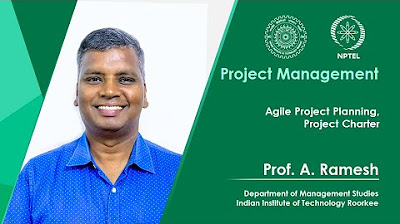Agile Management | Google Project Management Certificate
Summary
TLDRThe video introduces the concept of Agile project management, explaining how it embraces change and flexibility unlike the linear Waterfall method. It covers the history and core values of Agile expressed in the Agile Manifesto, including key principles like frequent delivery, customer collaboration, and embracing change. Popular Agile frameworks like Scrum, XP, Kanban and Lean are explained. The video makes the case for using Agile methods or blending them with Waterfall depending on the project environment, especially when dealing with volatility, uncertainty, complexity and ambiguity.
Takeaways
- 😊 Agile es una filosofía que enfatiza la flexibilidad y la adaptabilidad en la gestión de proyectos
- 👍 El Manifiesto Ágil contiene 4 valores centrales: individuos e interacciones, software funcionando, colaboración con el cliente, responder al cambio
- 📈 Scrum es una de las metodologías ágiles más populares que utiliza sprints para entregar valor de forma iterativa
- 🔀 Hay ocasiones en que tiene sentido mezclar enfoques tradicionales como Cascada con metodologías ágiles como Scrum
Q & A
¿Cuándo se creó el Manifiesto Ágil?
-El Manifiesto Ágil fue escrito en 2001 y reúne la sabiduría colectiva de las personas que lo desarrollaron a partir de su vasta experiencia y liderazgo de pensamiento en la industria de la tecnología.
¿Cuáles son los cuatro valores del Manifiesto Ágil?
-Los cuatro valores del Manifiesto Ágil son: individuos e interacciones sobre procesos y herramientas, software funcional sobre documentación exhaustiva, colaboración con el cliente sobre negociación contractual, respuesta al cambio sobre seguimiento de un plan.
¿Qué es Scrum?
-Scrum es una metodología de gestión de proyectos Ágil que se basa en ciclos cortos de trabajo llamados sprints para desarrollar y probar rápidamente un entregable. Cuenta con roles claros como el Scrum Master y el Product Owner.
¿Cuáles son las diferencias clave entre metodologías Ágil y en Cascada?
-Las metodologías Ágil son iterativas, flexibles e incorporan cambios a lo largo del proceso, mientras que las metodologías en Cascada son lineales, secuenciales y no fomentan los cambios una vez que el proceso ha comenzado.
¿Qué significa VUCA?
-VUCA es un acrónimo que representa Volatilidad, Incertidumbre, Complejidad y Ambigüedad. Se desarrolló para categorizar y pensar sobre las fuerzas que dan forma a nuestro mundo y negocios, sin importar la industria.
¿Cuáles son algunos marcos y métodos Ágil?
-Algunos marcos y métodos Ágil populares son Scrum, Kanban, Programación Extrema (XP) y Lean.
¿Cuáles son los cuatro temas de los principios Ágil?
-Los cuatro temas de los principios Ágil son: entrega de valor, colaboración empresarial, cultura de equipo y retrospectivas.
¿Cuándo debería considerar mezclar metodologías Ágil y en Cascada?
-Debería considerar mezclar metodologías cuando los interesados o proveedores estén más cómodos con enfoques tradicionales, cuando haya requisitos regulatorios para ciertos procesos de trabajo o cuando uno de los proveedores ya esté siguiendo un enfoque tradicional.
¿Cuáles son algunos beneficios de Kanban?
-Algunos beneficios de Kanban son que proporciona una retroalimentación visual transparente sobre el estado del trabajo en progreso para todas las personas interesadas y garantiza que el equipo solo acepte una cantidad sostenible de trabajo en progreso.
¿Cuáles son algunas prácticas clave de Programación Extrema (XP)?
-Algunas prácticas clave de Programación Extrema son programación en parejas, integración continua, refactorización continua, diseño simple al comienzo y escribir pruebas en lugar de requisitos.
Outlines

This section is available to paid users only. Please upgrade to access this part.
Upgrade NowMindmap

This section is available to paid users only. Please upgrade to access this part.
Upgrade NowKeywords

This section is available to paid users only. Please upgrade to access this part.
Upgrade NowHighlights

This section is available to paid users only. Please upgrade to access this part.
Upgrade NowTranscripts

This section is available to paid users only. Please upgrade to access this part.
Upgrade NowBrowse More Related Video
5.0 / 5 (0 votes)






